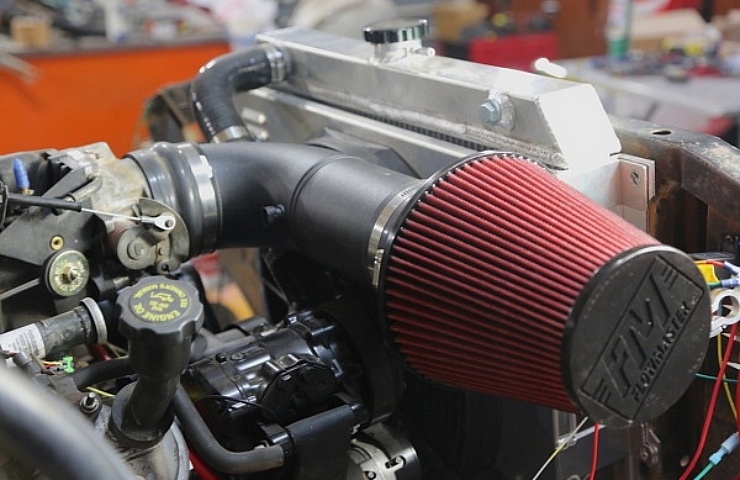Contents
How Cold Air Intake Works
The colder the air is, the denser it becomes. This means cold air weighs more than hot air for the same volume.
A denser air charge in the engine means more oxygen—the critical component for combustion. More oxygen means the fuel burns hotter and faster, ensuring a more complete combustion event. And that means more power with less fuel.
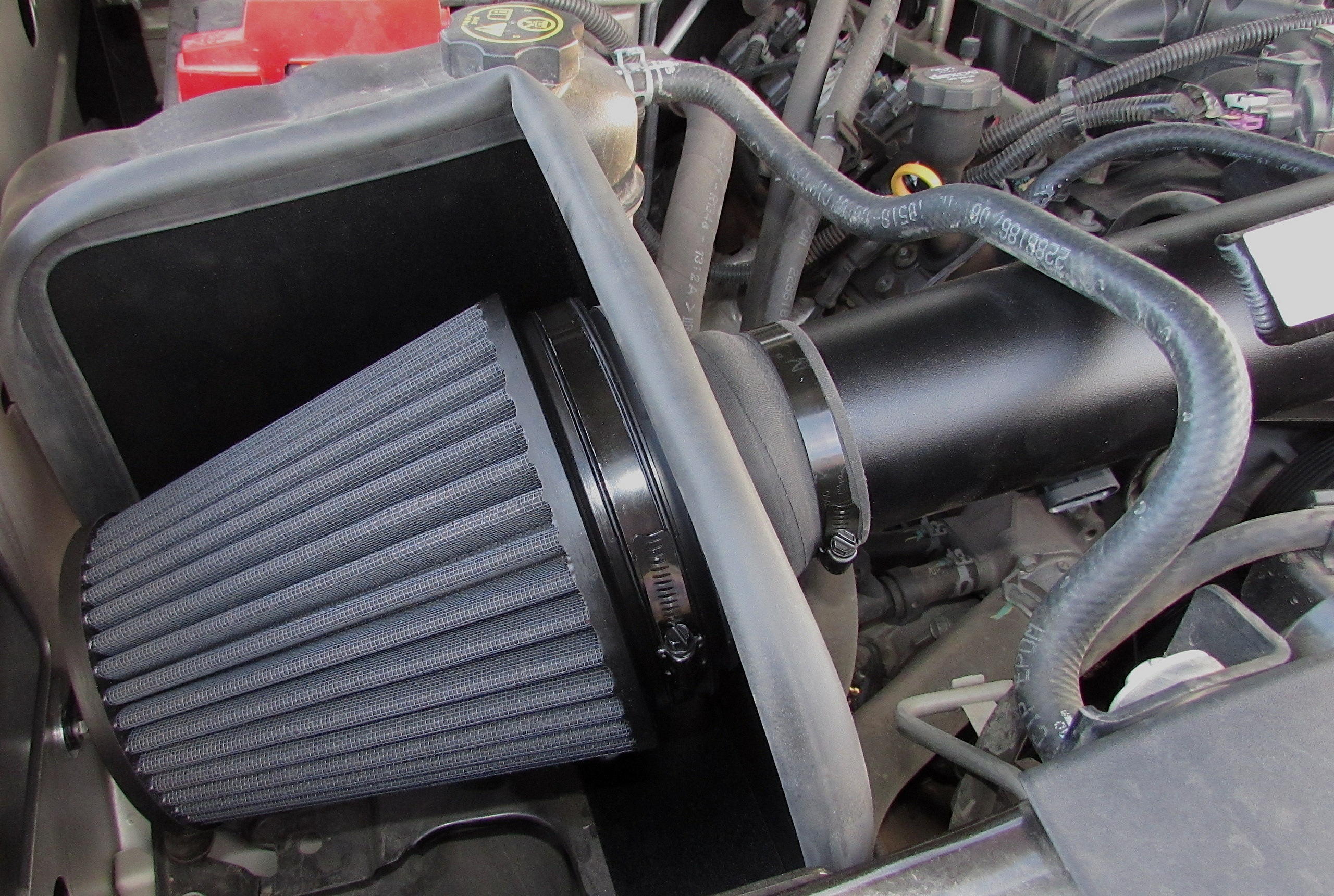
A cold air intake can drastically reduce the inlet air temperature for your engine and boost horsepower by 5 to 9 percent. But placement is critical.
Most OEM air intakes use a large air box to hold the air filter under the hood. Air heats up inside that box since underhood temperatures can easily reach 200 degrees Fahrenheit.
These air boxes typically use an inlet tube to draw air from the inner structure of the fender. While this air is cooler than the air on top of the engine, the big air box still heats up, just like everything else in an engine bay.
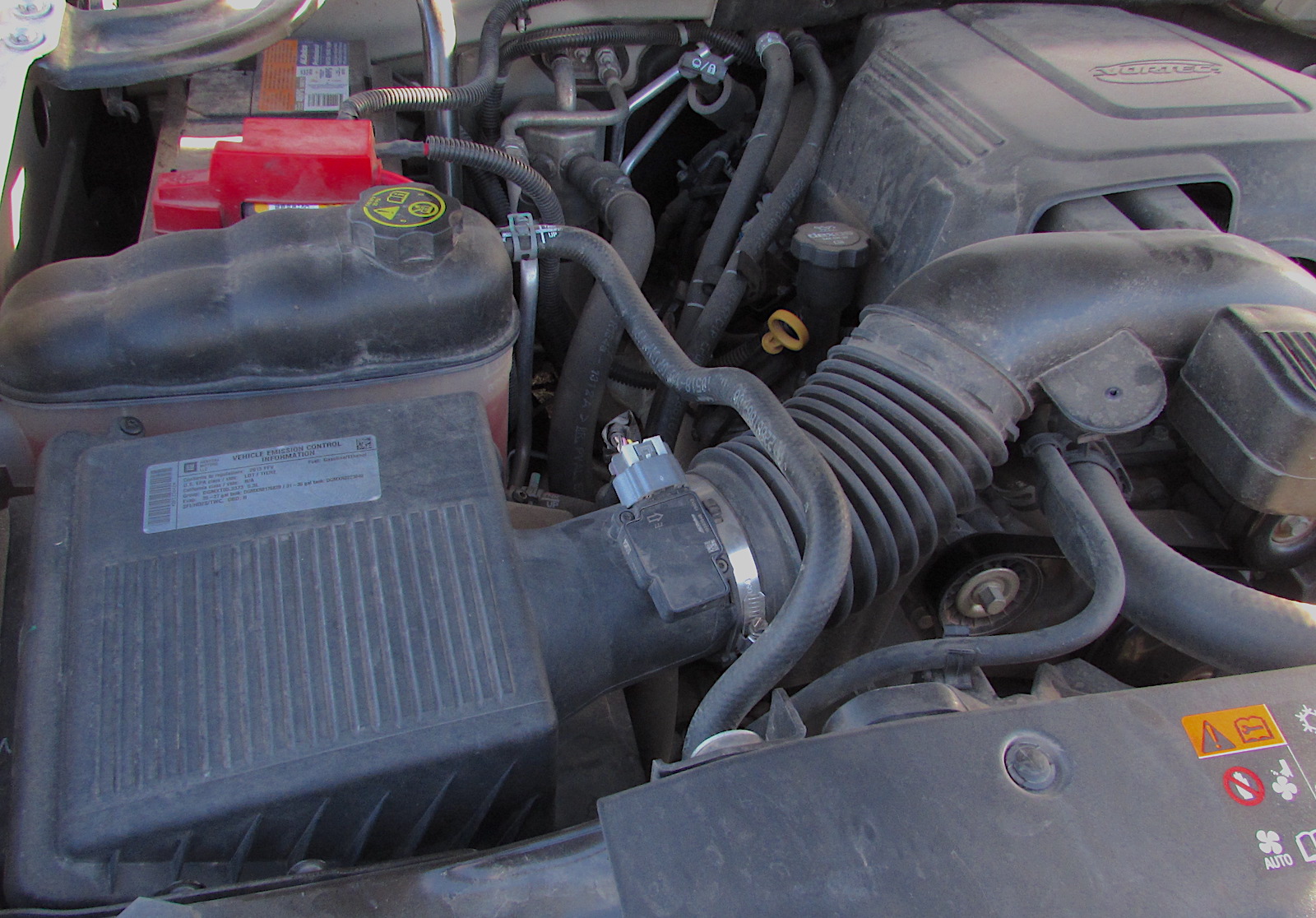
This is a factory intake for a 2013 Chevrolet Suburban. It is quiet but restrictive.
Reducing air intake temperatures by just 10 degrees can yield as much as a 1.8 percent increase in density. This, in turn, can lead to a 5 to 9 percent increase in power.
Also, placing the intake port in the front face of the vehicle can provide a ram-air effect, which forces more air into the engine than just the engine vacuum alone. More air equals more power and more efficiency.
Parts of a Cold Air Intake
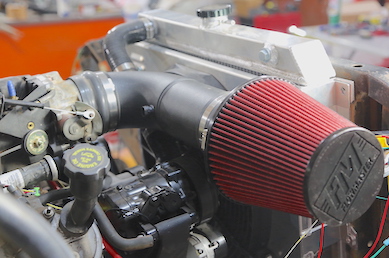
Most CAIs move the filter/inlet to the outside of the engine bay, but this 1966 Suburban has factory hood vents in the front of the hood. This placement gets a ton of fresh, cold air.
A cold air intake (CAI) consists of a large plastic or metal tube, an air filter, and some silicone boots to connect the pieces. Some kits come with sealing boxes to provide a cool area protected from engine heat, while other kits come with ports for headlights, fenders, or the lower air dam area.
You can purchase a vehicle-specific or universal kit or buy individual pieces to build your own.
Drawbacks to Cold Air Intakes
As with any modification, a CAI install has a few possible downsides. The main drawback is the possibility of sucking water into the intake. If your inlet is too low, especially on a low-riding vehicle, driving through a puddle that covers the inlet means that water can get sucked into the engine.
In the worst-case scenario, the engine will hydrolock. Because liquid is not compressible, hydrolocking your cylinders means broken valves, pistons, and rods.
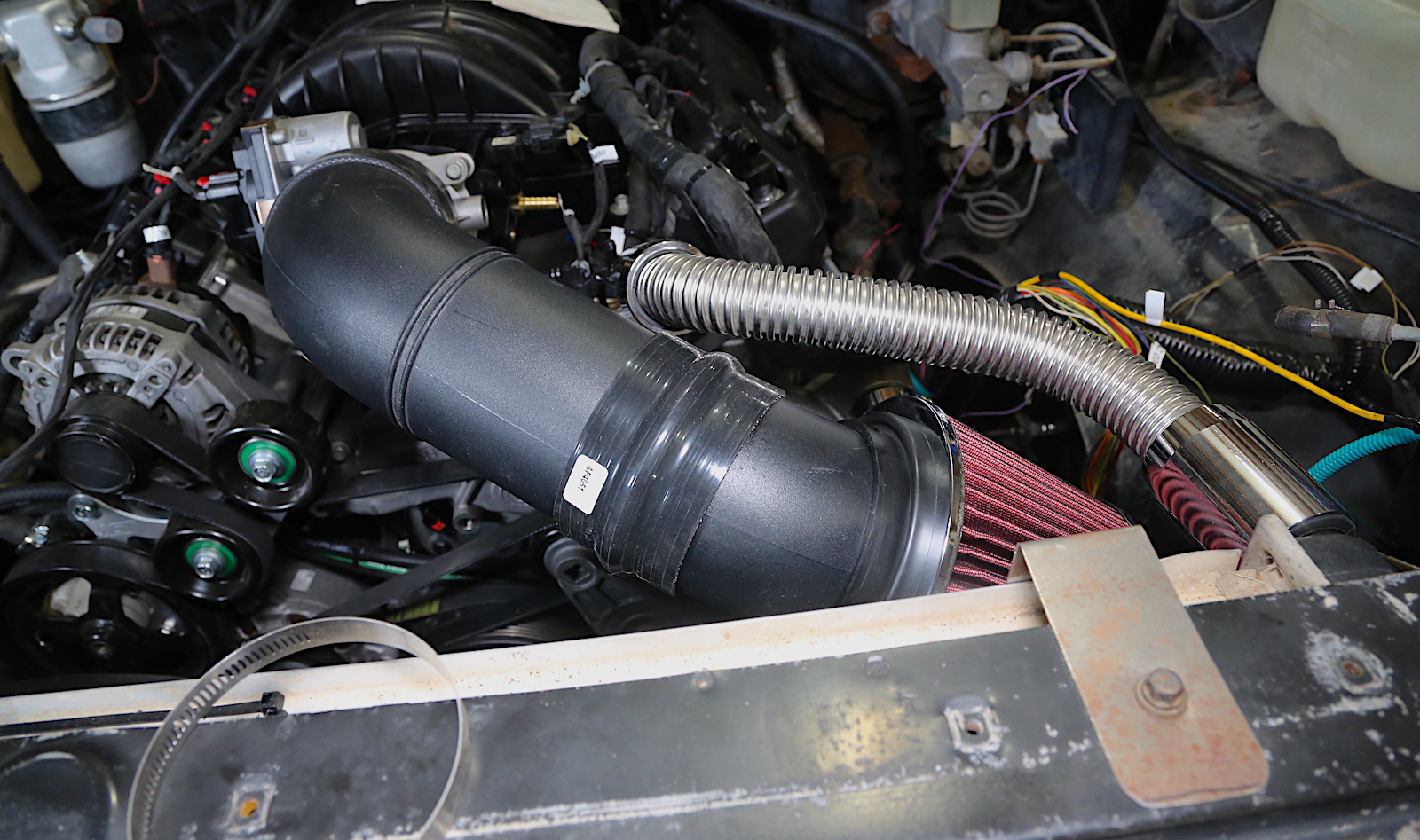
This placement could be better, as the intake gets only super-hot air through the radiator.
The other drawbacks are much less severe, such as increased noise. Some enthusiasts like this effect, as the engine sounds rowdier when accelerating. It can be pretty loud, though, and like an exhaust drone, it can become tiresome on long drives.
Shop now for cold air intakesBuilding a Cold Air Intake
You can build your own CAI with a kit or with individual components. All parts, including CAI kits and vehicle-specific components such as mass airflow sensor (MAF) bungs, are available on eBay. If your vehicle has a mass air sensor in the air intake tube, you need a bung or adapter tube for your model’s sensor type.
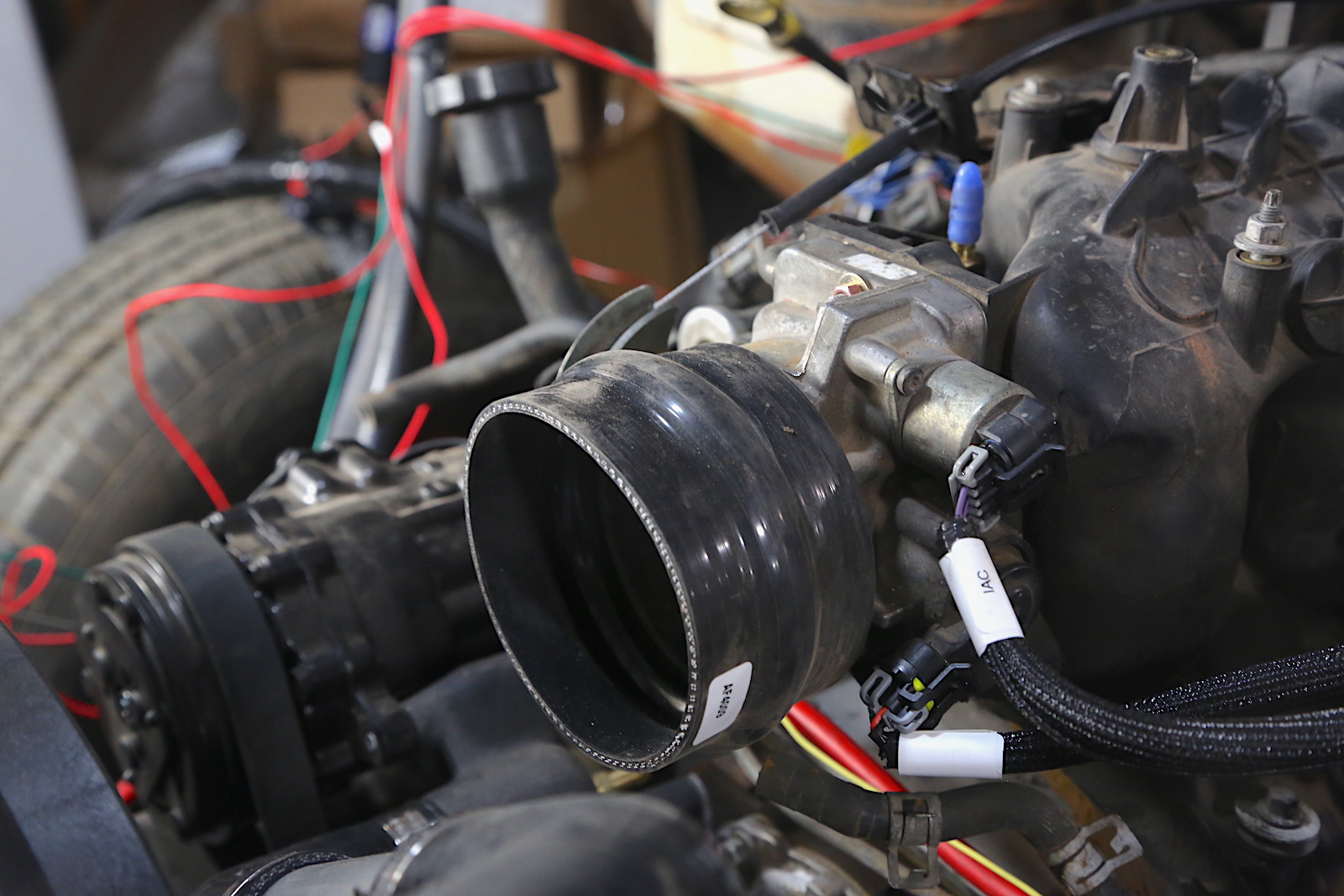
Start with the throttle body adapter, like this silicone boot.
CAI tubing can be three or four inches in diameter for most engines. You can calculate the correct diameter and length based on the airflow demand. Most brand-name kits have done the math and designed the system based on the results. Use the original OEM tubing as a starting point to determine your desired intake tubing size. Larger diameter tubing increases volume but reduces airspeed, while smaller tubing increases air speed but reduces air volume.
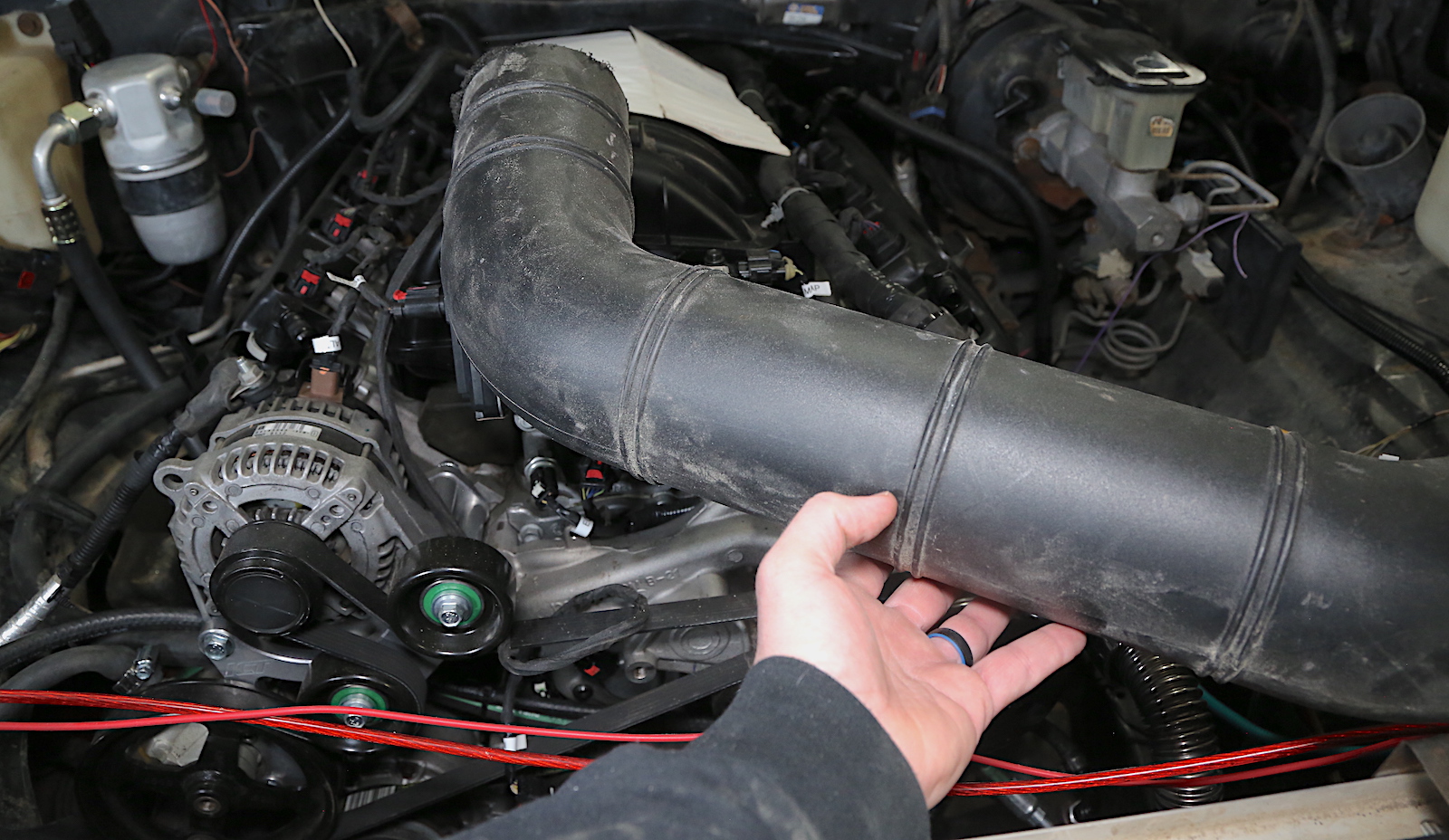
Experiment with the tubing placement to get the tube where it needs to go.
Before you begin, plan your air filter placement location. Then follow these steps to build a cold air intake:
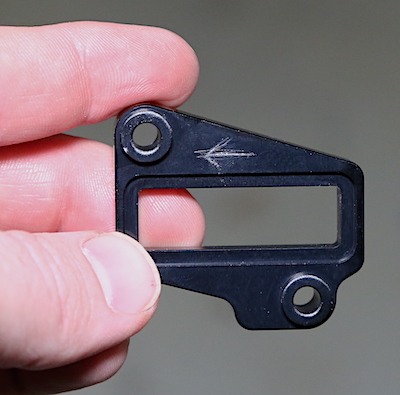
The MAF sensor placement can be critical, and the direction of flow matters as well. This bung is for a Gen V LT-series engine.
- Remove the original air inlet system. Keep these parts for future use.
- Install the throttle body boot to the throttle body.
- Start laying the tubing to reach the filter location, ensuring it clears any moving parts.
- Once you have the basic layout, you can cut your tubing. Leave some material for trimming rather than cutting the exact length the first time. It is much harder to add material back on.
- Use silicone boots and hose clamps to secure the sections of tubing together.
- Secure the tubing to ensure it doesn’t move, come off, or touch any moving or hot components.
- Locate the mass airflow sensor placement according to the engine’s needs.
- Install the filter to the intake tubing and secure it with hose clamps.
- Start the engine. Provided the MAF sensor is in the right location, the engine should run well and not set any codes.

On the 2013 Suburban, the kit uses a metal pipe with a bung welded in. Kits are very easy to install and take the guesswork out.
Cold air intakes are a great way to improve performance and give your engine bay a custom look. Your engine will run more efficiently, but be careful of the potential for lost fuel economy. That cool new intake sound can lead to goosing the throttle more often.
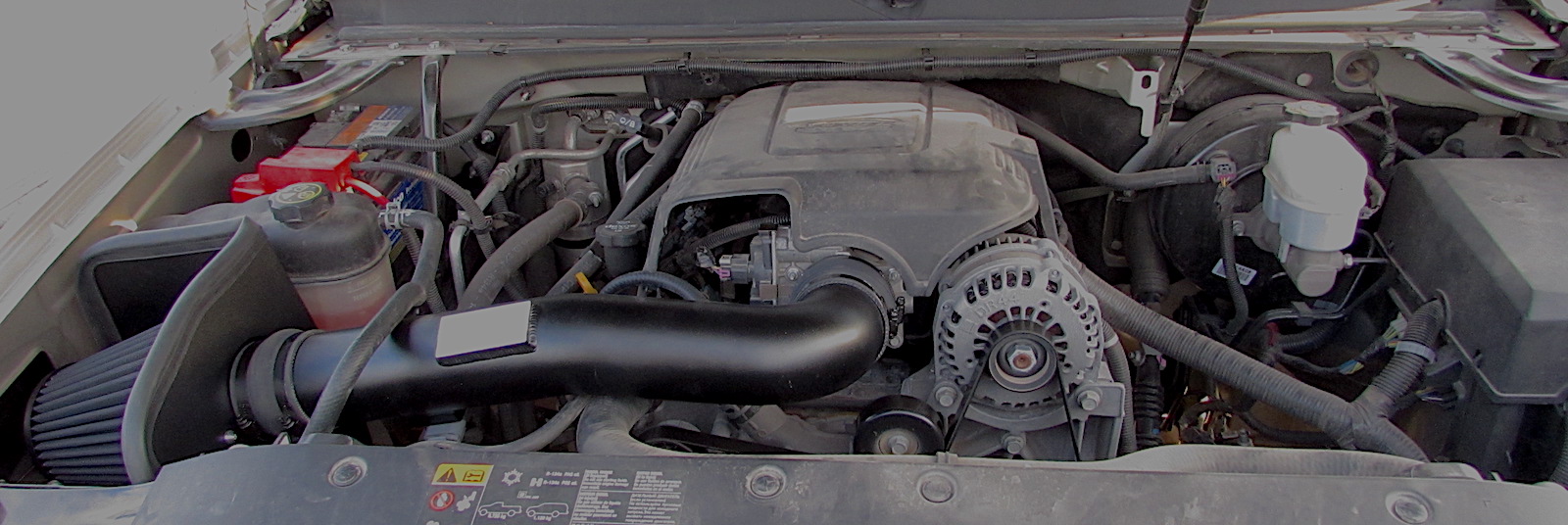
The 2013 Suburban kit shown here removes the airbox. It uses a sealing box that seals to the hood and ensures that only cold air from the inner fender comes into the engine.

